Northerners Don't Pray for Rain
2024
I've recently been exploring the breeze block as an object that for me feels quintessential to Mexican architecture, a practical object that can create shade, allow partial visibility, and air flow to partially outdoor spaces. I have also noticed the breeze block as an object prevalent in Vancouver where its only use is to create a romantic notion of thoughtful design. Ideally suited for arid areas, the breeze block is out of place in Vancouver each rainfall weakens their already fragile forms. Exploring these forms as simply decorative motifs has led me to equate the block with textile, repeating in pattern as their motifs tie themselves together. Attempting to continue these logics of textile I have woven a knot of ropes that forms a new fixture, not a wall, not a cloth, but an experiment devoid of its purpose. I bend rebar towards a silhouette, ropes and concrete drape around a figure partially tied to its own iconographies. I cast breeze brocks fashioned to look like a section of a weaving, as they form walls cloth becomes undeniable. It demands its existence as a hybrid and an absence, as a slipping form that is caught by its own rigidity, now just one rainfall away from dissolve.
I was recently on a drive in southern California, as we drove we read every billboard and road sign out loud “fresno 30 miles, speed enforced by radar, MAGA, Historic route 66, Elk” each entertaining us for a second. After a bit we saw this one sign in a field that read “Pray for rain”. At first after our initial reading we kind of laughed, in our Vancouver minds the idea of praying for rain was ridiculous. But after a moment we realised where we were, of course in a southern California desert farm people would need more rain. But that initial reaction from us, the absolute misunderstanding of what is a very simple want felt interesting to me. It was as if our own geographic realities made it impossible to understand the necessity of the place we are in. We had always prayed for sun. Our wants, our desires, our agencies were fundamentally misaligned with the place we were in and perhaps are not aligned with the geographic realities of the places I often reference. Being partially absent from Mexico I cannot truly know its inherent needs, I can’t feel the sun on my skin so I believe it's not warm. Perhaps my sensibilities must shift now. The land does not need more sun, yet I still pray for it. Perhaps, that is what my breeze blocks needed at times, but my prayers must now prioritise practical realities over romantic notions of authentic place if I hope to shift my perception. After all, northerners don't pray for rain.


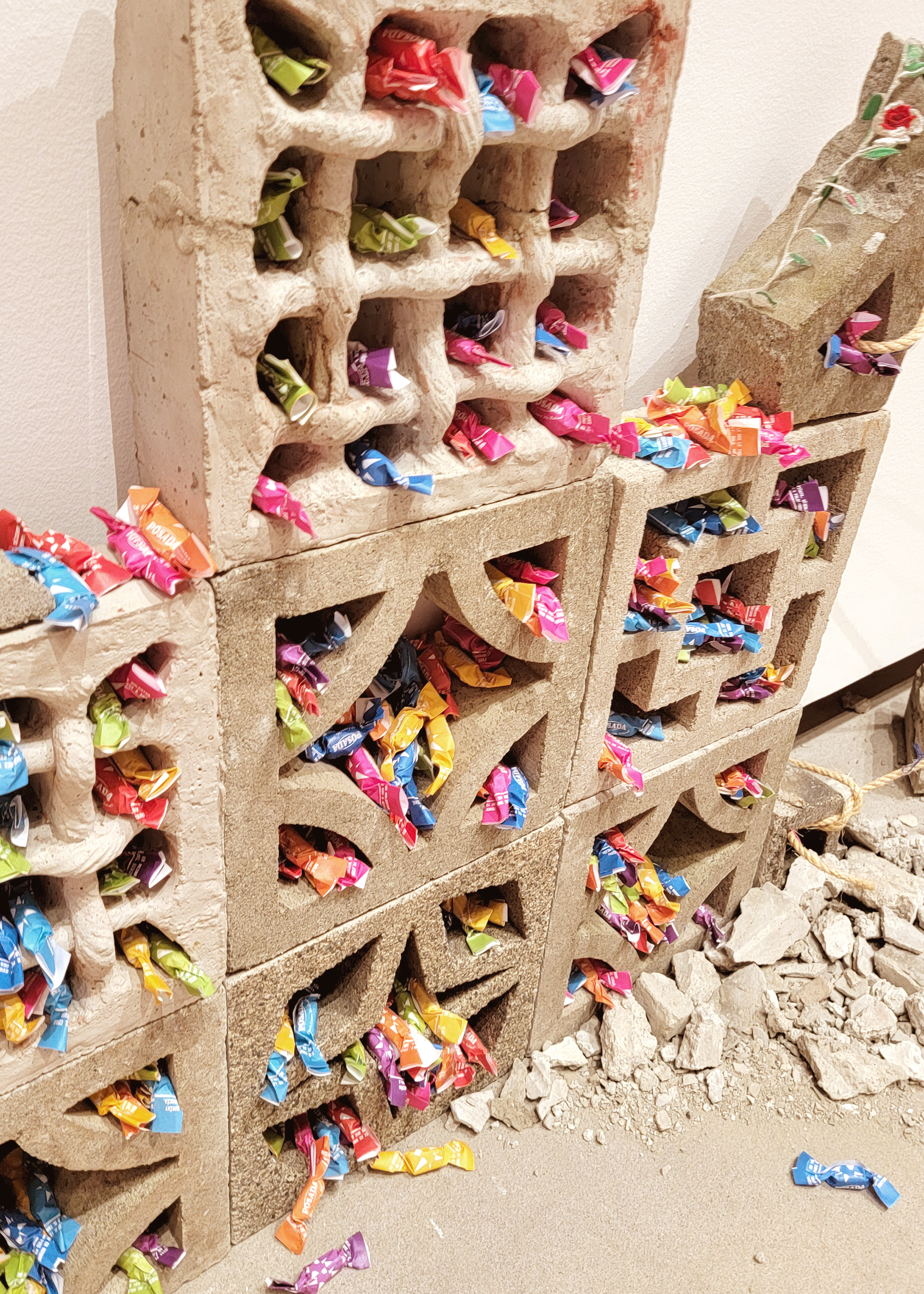

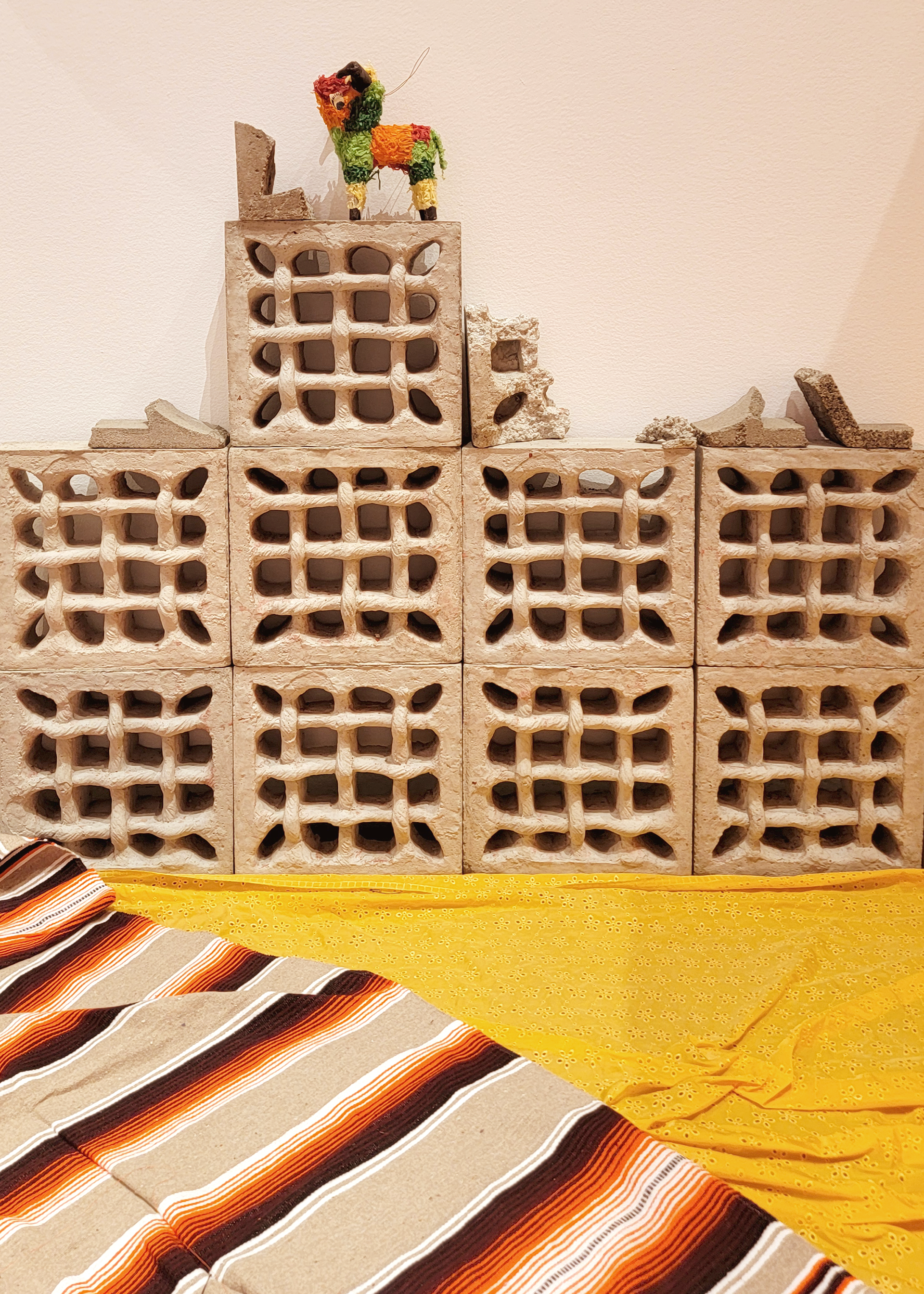
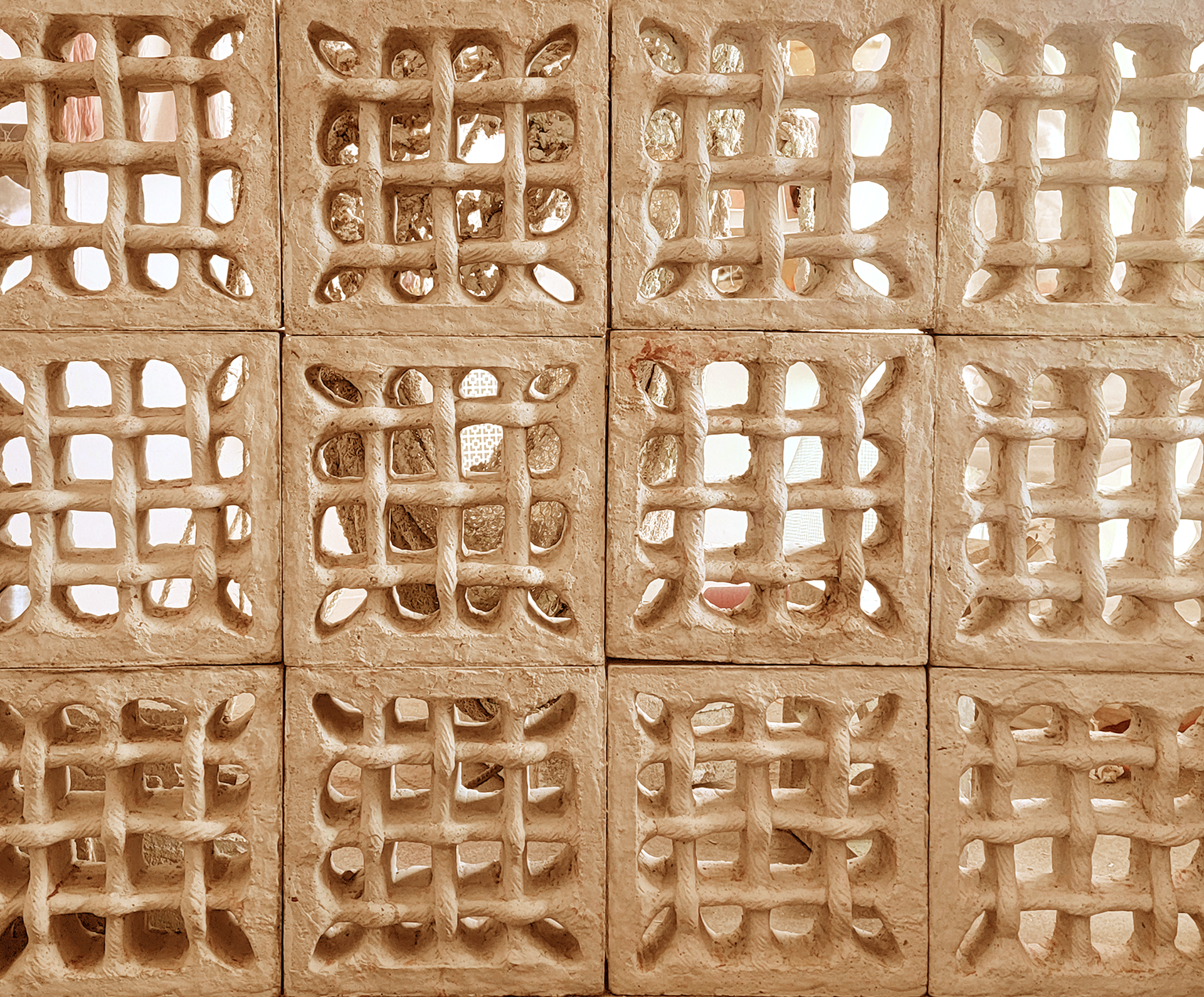
Breeze Book
2023, Art book
Breeze blocks make the garden wall as they partially obscure the sight beyond the fence, the past beyond the present.
They repeat and repeat and repeat.
Designing themselves as the diamond, as the star, as circles infinitely tied together.
The bricks form a maze of motif that resembles a weaving.
Their fringe of rebar reach up towards a potential.
A present of new spaces built above the old.
Am I placed in the present as my moments are re-lived?
Enacted, intact, enticed, entonces en ojo, en algo antiguo.
There are translations in my mothers photo albums.
Translations of time that tether me to the overgrown stones in my grandma's garden.
Translations of distance that pull Mexico towards them.
Translations of ownership as my grandma slips our photos in her purse.
Leaving me with a hole, an absence of understanding, a missing memory.
A hole in a wall, a missing brick, a moment of understanding that I thought was mine.
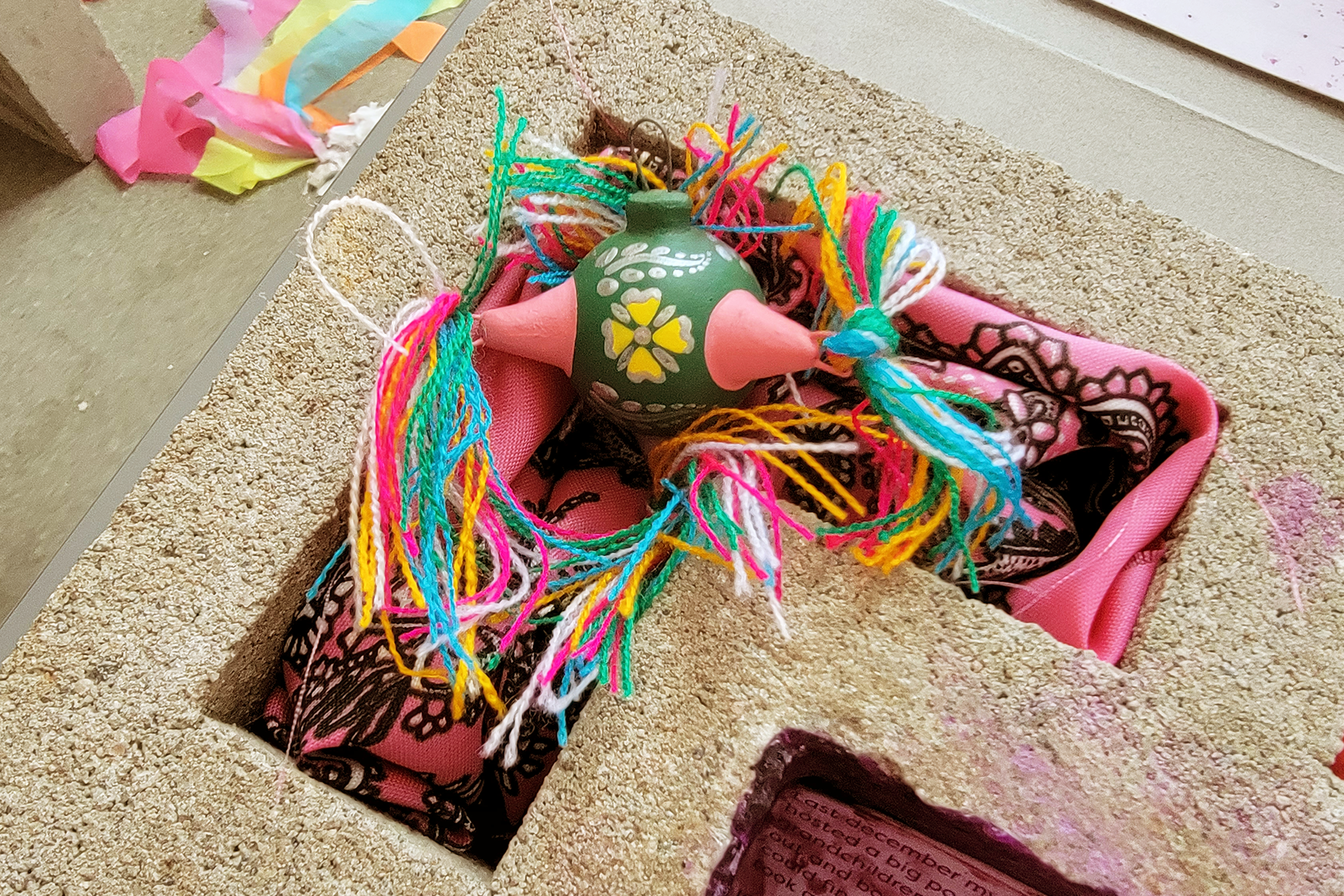
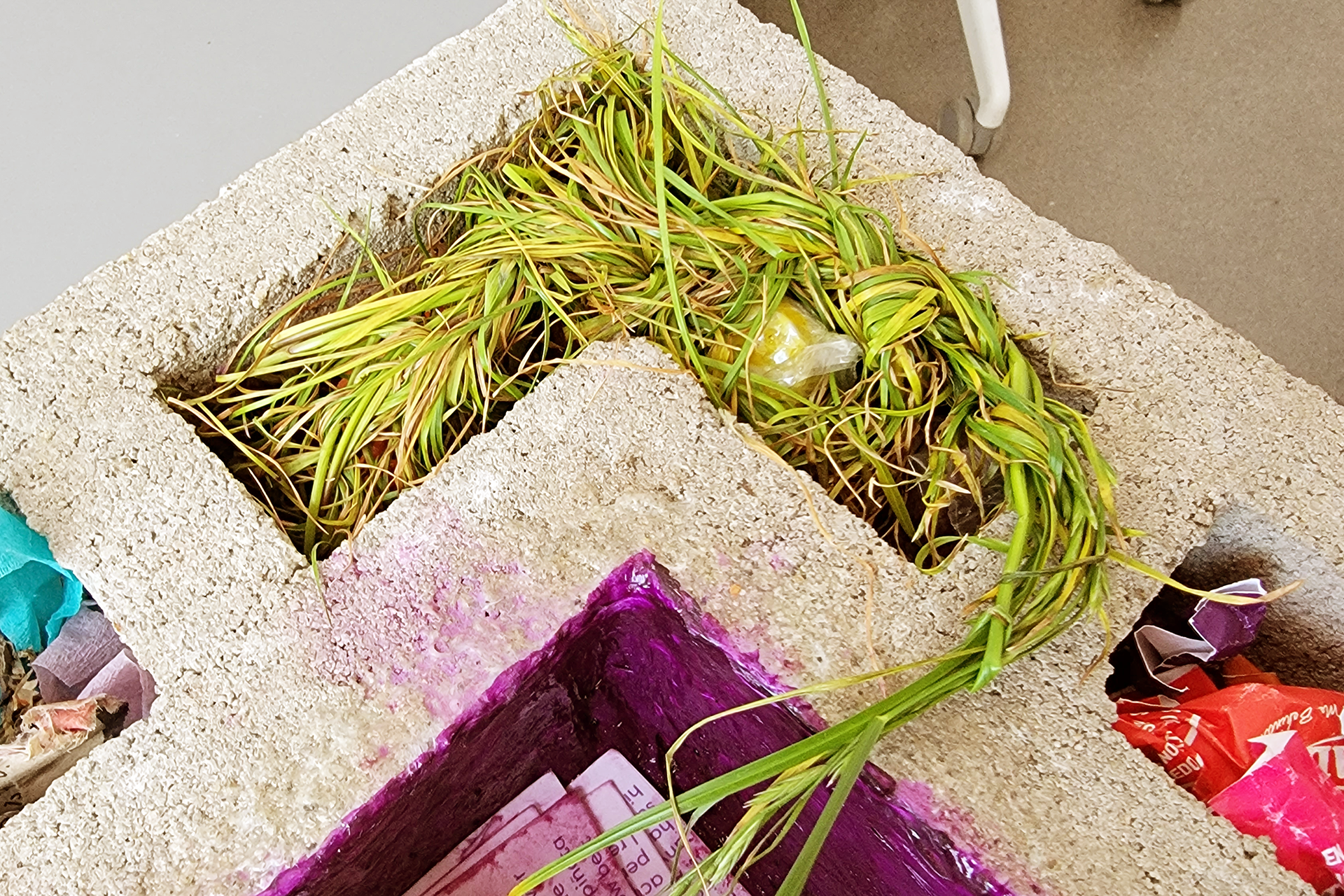
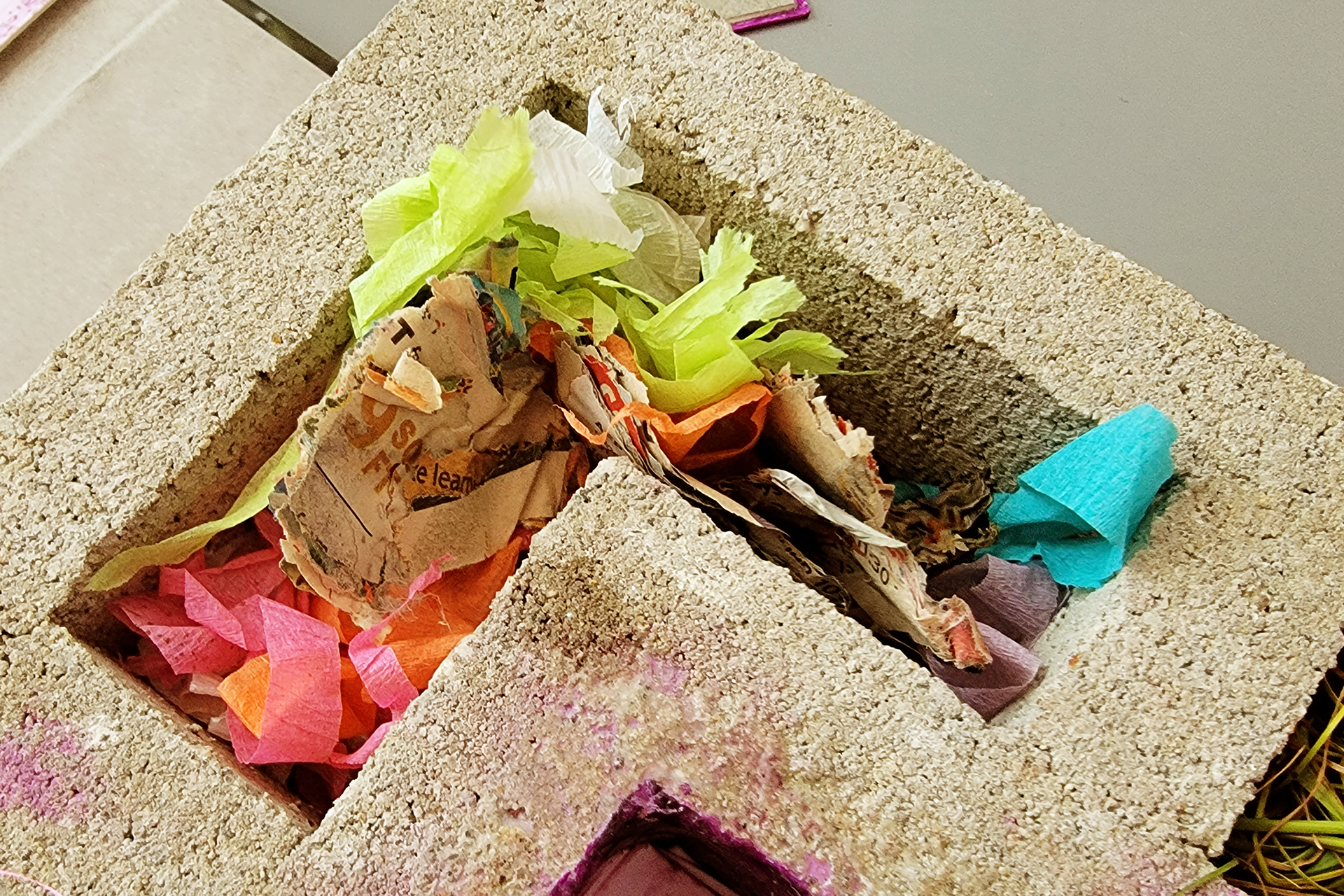
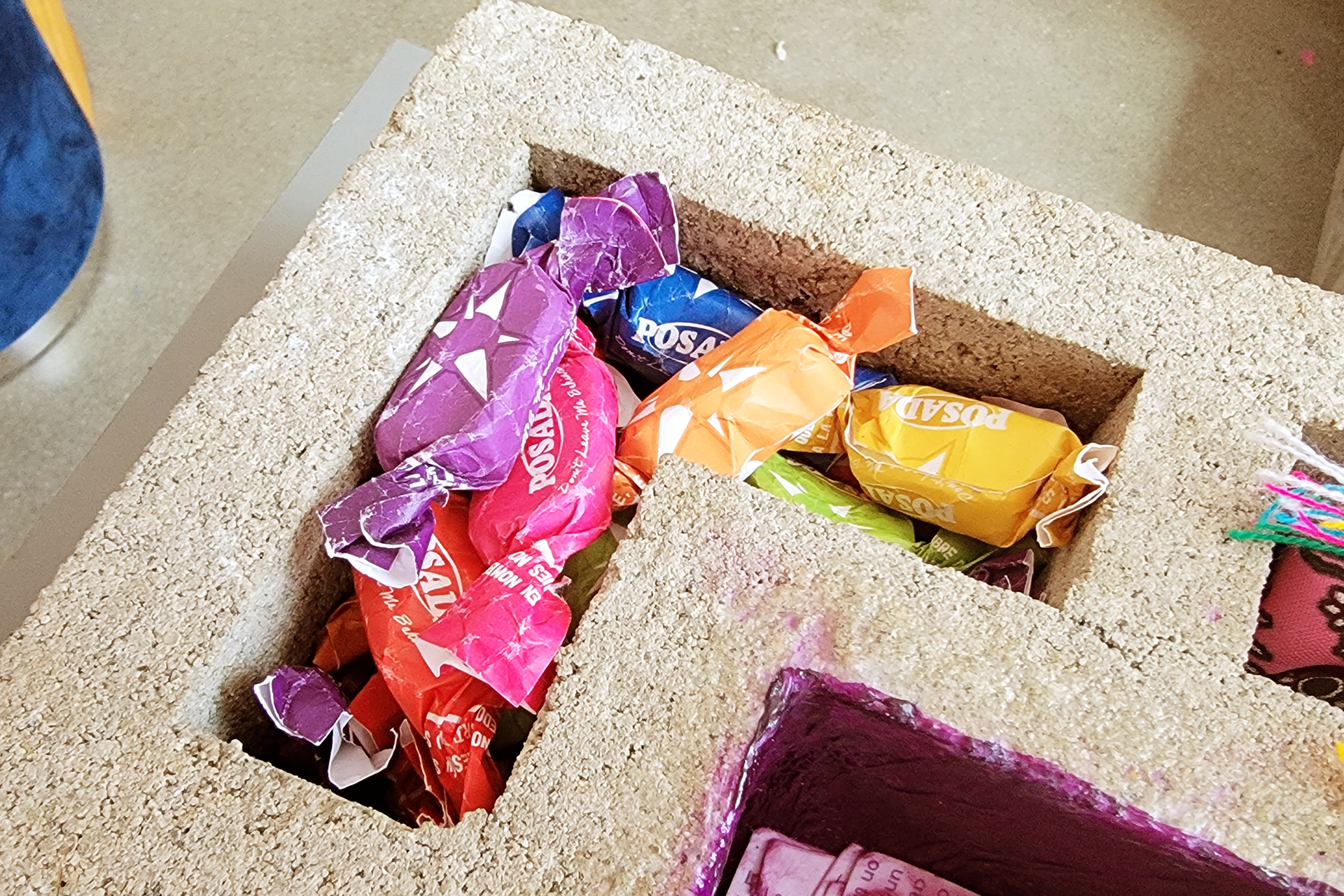
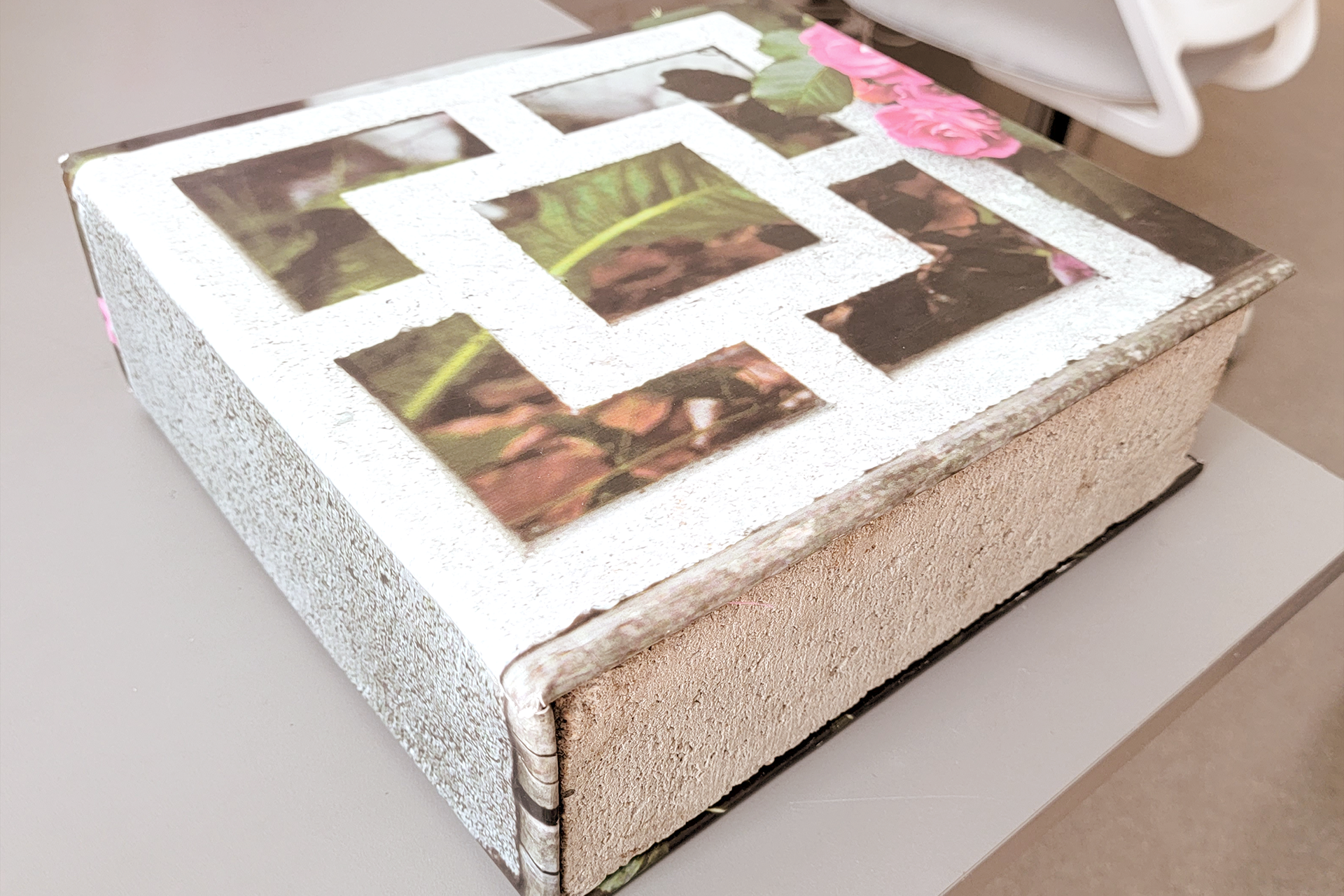

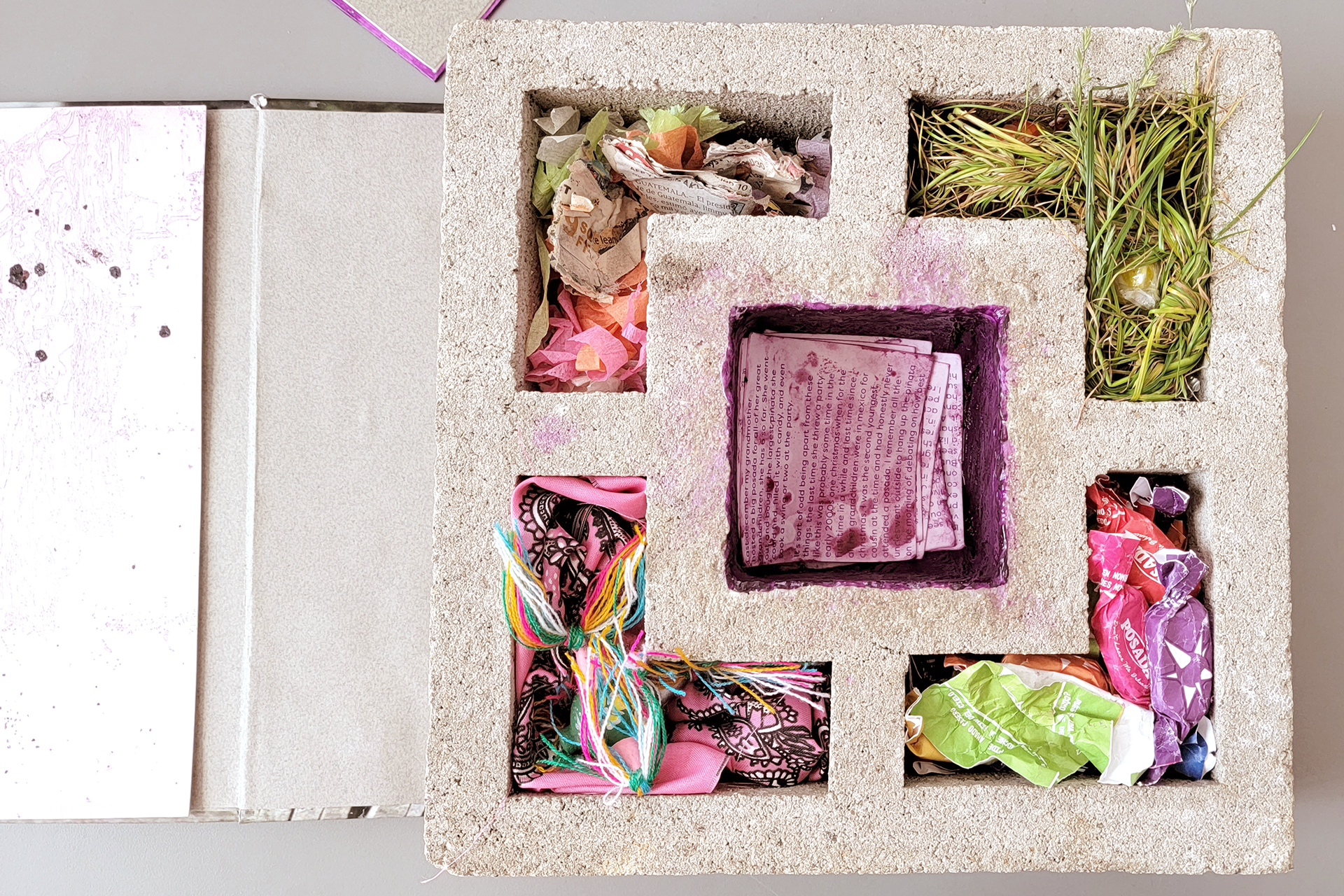
Enticed and Entangled en Algo Antiguo
2023
Exploring concrete and bricks as a material of memory. As an architecture of recollection the gallery will is transformed into a site of understanding forged out of culturally familiar forms. The breeze block which is common in Mexican homes is restaged many times in this exhibition. Within the over 150 reclaimed blocks from Vancouver homes and the hand twisted rope walls that mimic the blocks motifs. The exhibition is an embodiment of my practice of “recordar” remembering my past and “re-acuerdar” re settling it.
Re-acuerdar is to retwist and resettle the fibres of something. To assemble a recollection of knowledge and settle it, to twist into an agreement. To collect and organise, to force together. When I spot a fray in a thread I begin to twist it between my fingers until its fibres are reincorporated. As I bring together aesthetics of disparate things I twist them between my fingers until they agree, until their fibres are indistinguishable, until vine becomes fringe, until candy is bead, until concrete is textile.


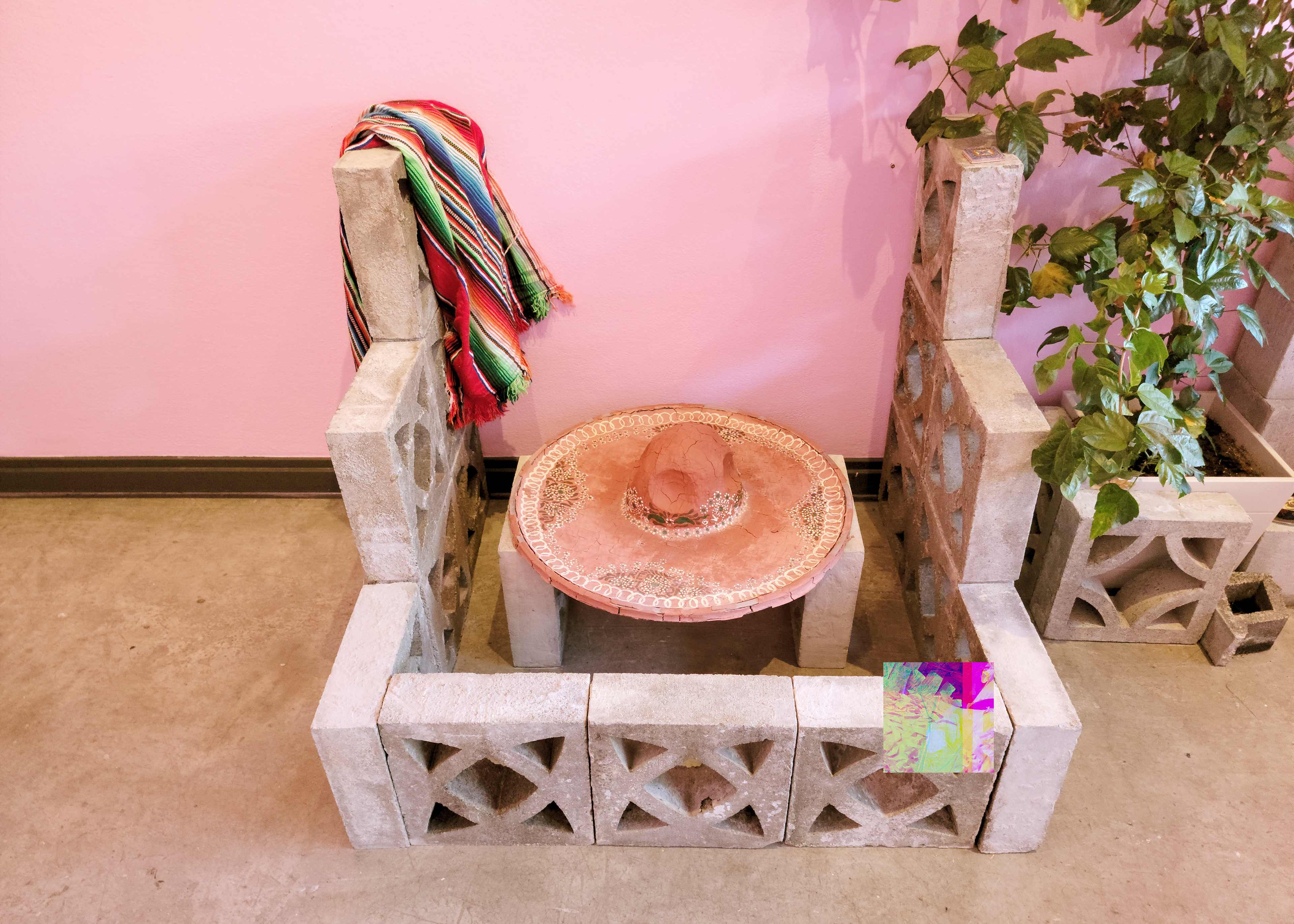
It's Really Hard To Thread A Needle
2019
Half built with the ends sticking out, a building started and finished years later, a story exposed and filled with another. When you go to Mexico city, something you’ll notice is that many homes have rebar ends and unfinished concrete on their roofs. I often thought of these buildings as unfinished, as a type of failure. Recently when I began installing my work with concrete and rebar and was trying to understand why I was drawn to these aesthetics. The wires, the rebar, the rubble, the chips are not decays of a poorly finished place, they are fringes cut off the loom, lint pilling from proper use, threads pulled from a snag. Their presence in the work points to an element of a place being lived in, of a functional aesthetic of materials, of a memory that is not unfinished but has potential to be built upon. The aesthetics of Mexico city are not of unfinishedness but of a potential to keep building,







